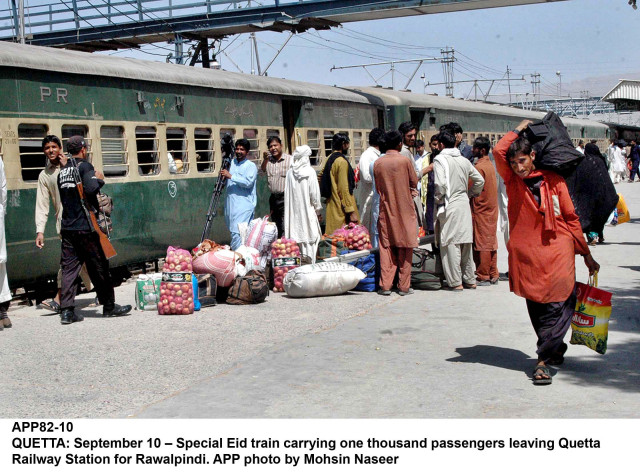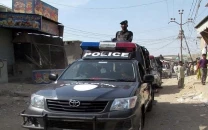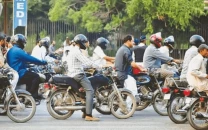Human error or malfunctioning signals?
A Pakistan Railways official sheds light on what could have caused the deadly Landhi train accident

A Pakistan Railways official sheds light on what could have caused the deadly Landhi train accident. PHOTO: APP
While it could be attributed to human error, malfunctioning of the automatic signals of Pakistan Railways could also be the cause. Nonetheless, only the driver can give testimony of the signal’s failure as the control room of Pakistan Railways has no reading available of its ‘automatic block section signals’.
An official of the Pakistan Railways, requesting anonymity, explained how the signals of Pakistan Railways work. According to him, there could be four to five signals at the Pakistan Railways stations. The official said that there are two signals just before the station - the first one is known as ‘outer’ and the second one is known as ‘home’, which are at a distance of nearly 580 metres from each other.
Apart from these two signals, he said that there are two or three other signals between the two stations, which are known as ‘block section signals’. The officers sitting in the control room of any particular station monitor the movement of the train within the limits of the outer and home signals on the screen. Once the train crosses the outer signal, said the official, the control room has no visibility of those ‘block sections signals’ or the train.
“Only the driver can tell if the block section signal was green or red in case an accident occurs,” said the official, adding that the block section signal turns automatically green when the train ahead has travelled a sufficient distance from that signal.
The accident
On Thursday, Fareed Express, which was coming from Lahore, was stationary at the outer signal of the Landhi Station at Jummah Goth. Meanwhile, Sukkur Express was also at a halt at the home signal of Landhi Station, as the ‘railroad switch’, which is a mechanical installation enabling trains to be guided from one track to another, was out of order.
Zakaria Express, which had set off from Multan, crossed the Bin Qasim Railway Station near Steel Mills and rammed into the last three bogies of the Fareed Express.
According to the Pakistan Railways official, the station master of the Bin Qasim Railway Station should not have given a go-ahead to the Zakaria Express without inquiring about the position of Fareed Express with the station master of the Landhi Station.
Also, when Zakaria Express crossed the Bin Qasim Railway Station’s signals, it must have been through the ‘block section signal’, which would have automatically turned red due to the presence of Fareed Express at the Jummah Goth signal. Since the driver of Zakaria Express claims to have received a green ‘block section signal’, the railway authorities do not have any option but to believe the driver, as the control room of any station does not have any evidence regarding the ‘block section signals’, said the official.
In developed countries, said the official, the control room has access to all the signals of the railways. However, it would be very costly to implement that in Pakistan.
These signals, according to the official, were installed more than a decade ago and since then no major maintenance work was carried out on them. In September, a similar accident occurred when the Peshawar-Karachi Awami Express rammed into a freight train near Multan. The accident was also blamed on the driver error.
Over-speeding
Even if the driver had received green signals, the official pointed out, he should have reduced the speed of the train as he was inside a residential area and very close to the destination.
If the emergency brakes are applied, the official explained, the train takes around five minutes and two to three kilometres to stop. On that ill-fated day, the Zakaria Express was travelling at full speed, which is why despite having applied the emergency brakes, the train failed to stop, said the official.
Karachi’s divisional signal engineer of the Pakistan Railways refused to comment on the issue when contacted by The Express Tribune.
Published in The Express Tribune, November 12th, 2016.



















COMMENTS
Comments are moderated and generally will be posted if they are on-topic and not abusive.
For more information, please see our Comments FAQ